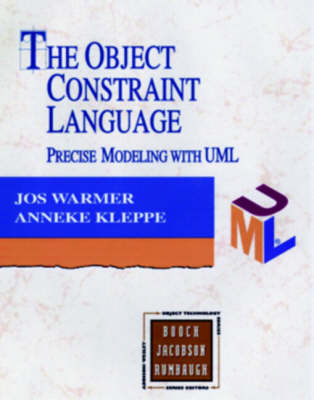OCL complements the UML by providing a language for formally expressing the constraints of a model, a facility useful in user models as well as in the definition of the UML itself. Jos and Anneke provide a comprehensive and much-needed reference to this formalism.--Grady Booch, Ivar Jacobson, James Rumbaugh The Object Constraint Language (OCL) is a new notational language, a subset of the industry standard Unified Modeling Language, that allows software developers to write constraints over object models. These constraints are particularly useful, as they allow a developer to create a highly specific set of rules that governs the aspect of an individual object. As many software projects today require unique and complex rules that are written specifically for business models, OCL is fast becoming an integral facet of object development. This book is a practical guide to OCL for software architects, designers, and developers. Because it is designed for ease and usability, OCL is likely to gain broad acceptance. Much care has been taken during the design of OCL to ensure that the syntax is readable and writable by the average software modeler.
The straightforward nature of OCL makes it a natural candidate to supersede current constraint languages. The authors' pragmatic approach and illustrative use of examples will help application developers to get up to speed quickly with this important object modeling method. Other highlights: *Detailed instruction explains how and why to use OCL, showing its relation to UML *Illuminating case study demonstrates several UML diagrams and corresponding constraints *Provides keen insight from the primary author of the OCL standard portion of the UML 1.1 standard of the OMG 0201379406B04062001
- ISBN10 0201379406
- ISBN13 9780201379402
- Publish Date 10 December 1998
- Publish Status Out of Print
- Out of Print 26 October 2005
- Publish Country US
- Publisher Pearson Education Limited
- Imprint Addison Wesley
- Format Paperback
- Pages 144
- Language English
